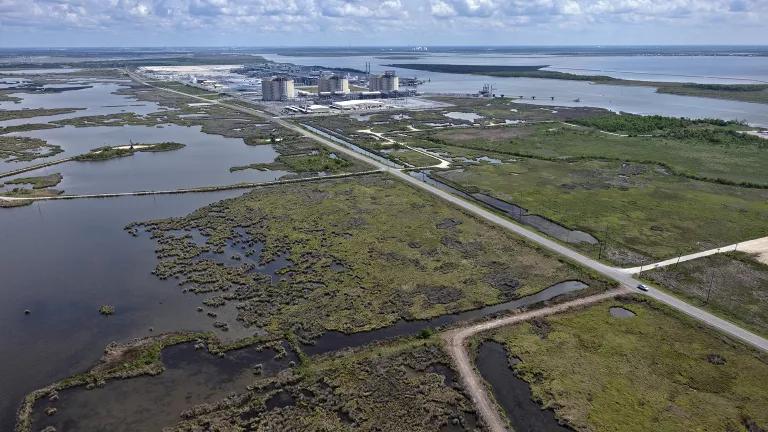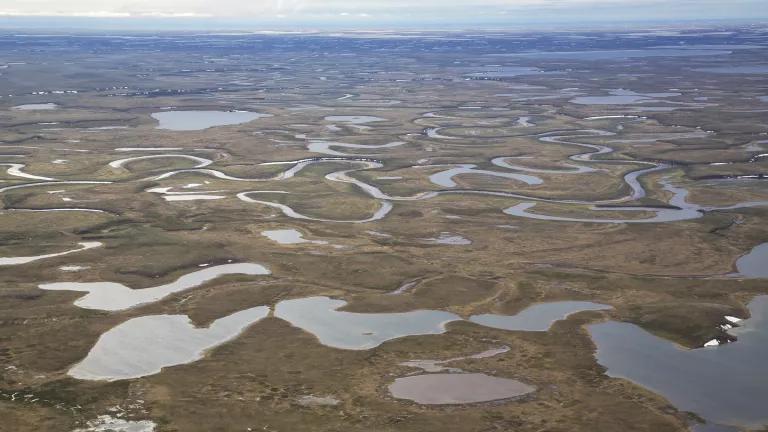NRDC applauds EPA for conducting an open and transparent process for the Bristol Bay Watershed Assessment. Today EPA released a report from the independent scientists that the agency convened last summer to review its draft Bristol Bay Watershed Assessment. Those scientists offered both praise and recommendations for improvement, but overall commended EPA for a comprehensive report. EPA will consider the peer reviewers’ report before finalizing its Watershed Assessment, which could lead the agency to prohibit the proposed Pebble Mine under the Clean Water Act.
EPA convened a transparent process and asked both the public and independent scientists to review its draft Bristol Bay Watershed Assessment issued in May 2012. In a report released today, 12 independent scientists “commended EPA for an assessment of a challenging, complex scientific issue, working with data of variable quantity and quality.” Many of the scientific reviewers complimented EPA on its “well-written” and “comprehensive” assessment. Per the charge from EPA, they also offered recommendations for “improving the draft document, relating to scope, technical content, and clarity of presentation.”
EPA’s draft Watershed Assessment found that Pebble Mine would have “significant impacts” on fish populations and streams surrounding the mine site. Even at its minimum size, Pebble Mine would eliminate or block 55 to 87 miles of salmon streams and at least 2500 acres of wetlands – key habitat for sockeye, other fishes and the vast Southwest Alaskan ecosystem that depends on the healthy fisheries. A tailings dam failure releasing toxic mine waste would have “catastrophic” effects on the ecosystem and region.
If anything, EPA’s draft Watershed Assessment actually underestimated risk. As one reviewer noted, “[g]iven the extremely long-term nature of the projected Pebble project, and the irreversible changes which would be imposed to the region, the risks seem, if anything, understated.”
Several peer reviewers pointed out that EPA’s assumptions are unrealistically conservative. For instance, the peer reviewers recommended that EPA consider ancillary development and climate change, as well as the challenges of storing toxic mine tailings “in perpetuity.” Maintaining mine tailings for tens of thousands of years is “problematic.” One reviewer struggled “with the idea of this mine being monitored and maintained ‘in perpetuity’” and noted that “the cards are stacked against [salmon].”
The peer reviewers also suggested that EPA consider other risks by detailing “a broader range of mining scenarios,” the “interconnectedness of groundwater and surface water and its importance to fish habitat in the watersheds,” impacts to fish other than sockeye salmon, and non-fish related impacts.
The end result would be even more significant risks than EPA detailed in its draft Watershed Assessment.
EPA was asked by Alaska Natives, commercial fishermen, Bristol Bay residents, sportsmen, churches, and conservation groups to protect Bristol Bay. NRDC’s members and activists alone have generated more than a million petitions calling for a stop to the mine.
EPA’s draft Watershed Assessment provides more than enough information to find with absolute certainty that large-scale mining (like Pebble Mine) in the Bristol Bay watershed would pose enormous, irreversible harm to the watershed’s natural resources -- and the people and wildlife that depend on those resources.
As one reviewer commented: “…make no mistake, we cannot have both mining and productive salmon stocks in the Bristol Bay watershed…”
We urge EPA to finalize the Watershed Assessment, incorporating recommendations from the peer review report to examine all aspects of harm associated with the proposed mine.
And we urge EPA to use its authority under the Clean Water Act to protect the people and wildlife of Bristol Bay.



